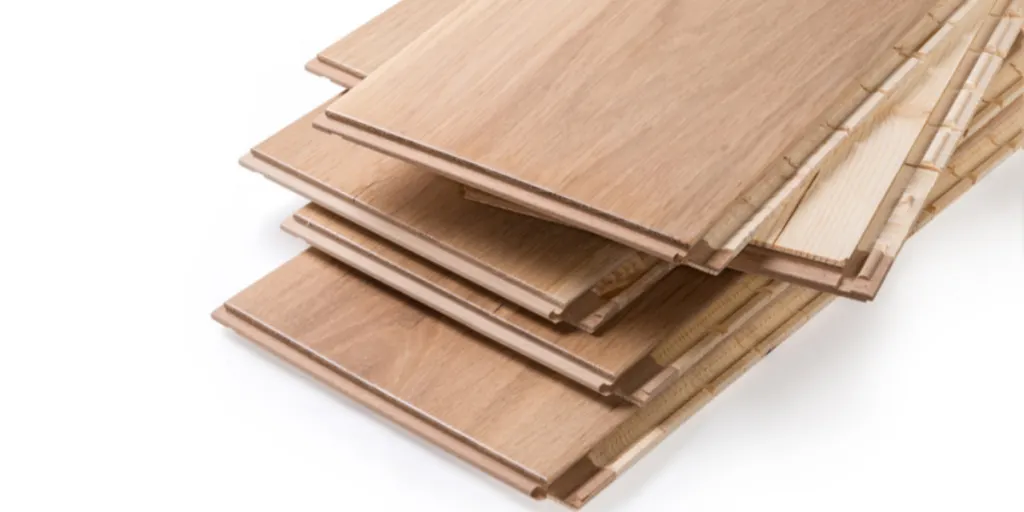Customers who want solid hardwood flooring but can’t afford the cost of real wood have a great option. Now, they can select engineered hardwood flooring solutions with real wood finishes to match their personal style. In this article, we discuss the ins and outs of this attractive flooring option to help you make informed decisions.
Table of Contents
Engineered hardwood flooring growth projections
Engineered hardwood vs. hardwood vs. laminate flooring
Engineered wood flooring features
Order sustainable engineered hardwood flooring
Engineered hardwood flooring growth projections
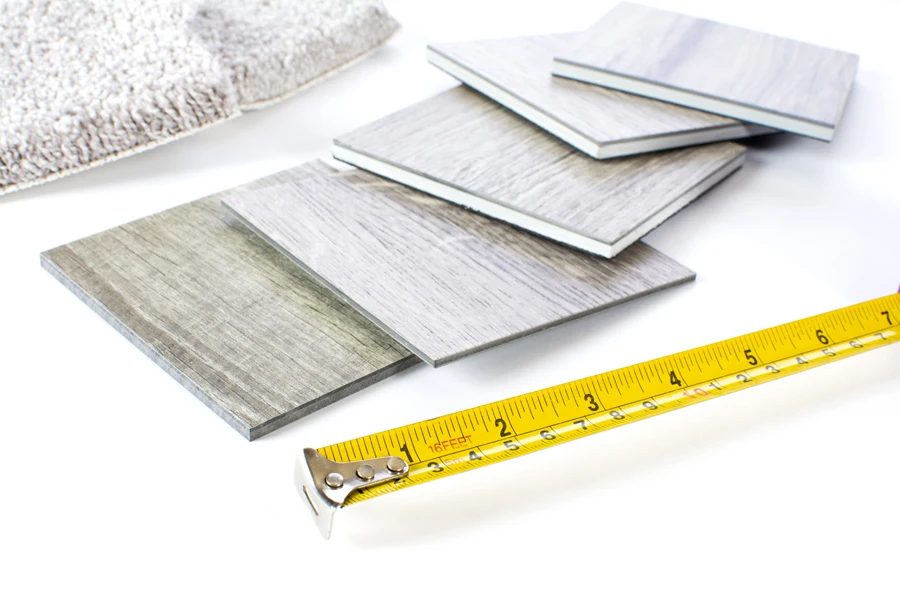
Econ Market Research conducted a study of global engineered hardwood flooring sales. Their report showed that the worldwide value of these sales amounted to USD 7.94 billion in 2023. This company further projected that this figure would rise to USD 12.45 billion by 2032 at a compound annual growth rate (CAGR) of 5.1%.
Interest in engineered hardwood floors is replacing real hardwood floors because of ecological concerns. Since engineered hardwood uses less wood, it has a lower environmental impact than solid hardwood floors, increasing its sustainability in construction.
Manufacturing technologies can also give customers the look and feel of real wood without compromising quality. Additionally, the selection of wood species, finishes, and styles adds to the growing appeal of these products, which come at lower prices than real wood.
Engineered hardwood vs. hardwood vs. laminate flooring
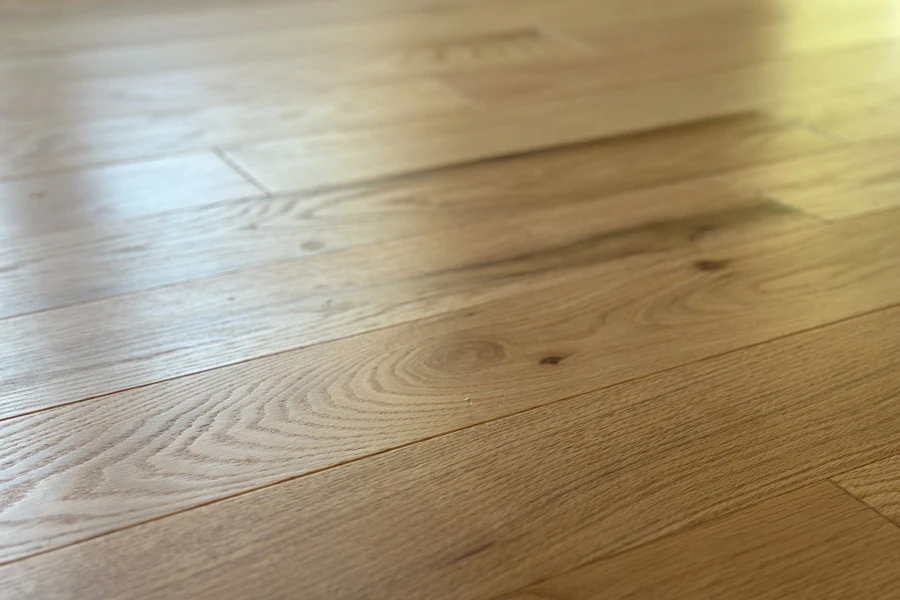
Engineered hardwood flooring: Engineered wood planks are composites made of a real hardwood veneer supported by a plywood core and base. This composite is typically thinner than real hardwood floors but thicker than laminate flooring.
Real hardwood flooring: Solid hardwood planks are made from the wood of trees such as walnut, maple, hickory, oak, lapacho or IPE, and others.
Laminate flooring: This product is made from pressed wood fibers with a resin top surface. This composite undergoes repeated imprinting of a wood image that becomes a part of the core of this fiberboard.
Engineered wood flooring features

Engineered wood flooring has the appeal of authentic hardwood but features a modern construction with advanced core technology. Due to construction differences, the quality of these products varies. As a result, it is essential to understand certain features when shopping for this type of flooring.
- Standard widths: 2.25″ to 7″
- Standard lengths: 12″ to 60″
- Thickness: 3/8” to 9/16”
- Custom widths: Some suppliers manufacture wider planks of 6″ to 10″ on demand for customers who want fewer seams.
- Custom lengths: 2 to 18 feet
- Wear layer: A thicker top layer allows for about 3 finishes after installation, extending its lifespan before replacement is needed.
- Core thickness: Multiple plywood core layers add to the flooring’s quality, with each layer typically enhancing the grade and hardness.
- Affordable price: About US $2.50 to $12 per square foot compared with US $8 to $16 per square foot of solid wood flooring.
- Volatile organic compounds: VOCs are made from glue and other chemicals that release gases once installed. Look for high-quality, engineered floor options that specify low or no VOC product emissions.
- California Air Resources Board CARB2 compliance: This certification means that the product releases safe levels of formaldehyde.
The benefits of engineered hardwood floors
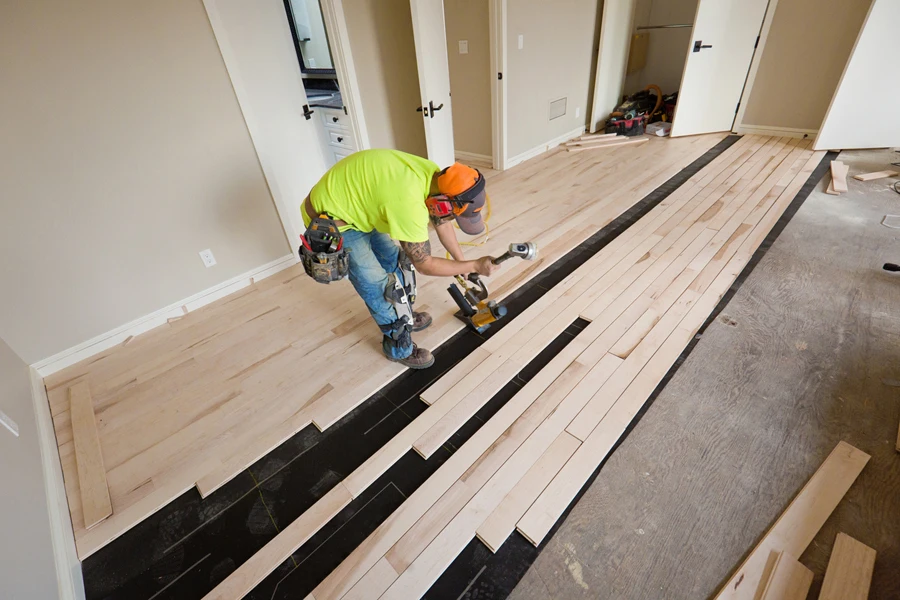
Other than being more affordable, engineered hardwood floors have the following advantages over solid wood floors.:
Multiple styles
You can buy engineered flooring in most types of hardwood. Customers can also choose matte, minimal, or high gloss finishes and luxurious flooring with a timeless look and a contemporary feel according to their decor tastes. Long and extra-wide planks are available for spaces that need a hardwood floor design that also matches the area.
Durability
Engineered hardwood planks usually have a top layer of real wood, a plywood core or durable fiberboard in the middle, and a backing layer or bottom layer. This construction creates a rigid core with a durable finish that can withstand a lot of wear and tear from people and animals. Still, manufacturers produce varying qualities with extra laminate layers, increasing the thickness and strength of these products.
Weather protection
Engineered hardwood floors are water-resistant and often come with an extra layer of moisture-resistant protection. So, while they might not be waterproof, they respond well to damp conditions. This response is also due to a robust construction with a plywood core that is resistant to swelling and warping.
Due to their properties, this type of product withstands seasonal changes between hot and cold temperatures as well, so it is also resistant to splitting. Despite these excellent properties, most manufacturers advise against installing this flooring in basements, laundry rooms, kitchens, and bathrooms.
Installation
Another advantage of engineered hardwood floors is that they are easier to install and replace in separate sections than solid wood. A simple Click-N-Step, pre-applied adhesive flooring technology or one that uses glue and staples are a few ways you can achieve a quick installation. If your house has concrete floors, multiple hardwood flooring installation options make this a natural choice.
Easy maintenance
Customers can maintain these floors with regular sweeping. They can also mop them sparingly with a mixture of water and a non-abrasive soap mixture when necessary. Applying a thin layer of wood cleaner on the top layer once in a while will also extend the floor’s lifespan.
Beyond this, they can sand and refinish the surface two to three times before replacing the planks becomes necessary. But you should avoid heat and excess moisture when maintaining these floors and confirm whether the product you choose accommodates underfloor heating.
Lifespan
Traditional hardwood withstands extreme variances in weather conditions better than engineered hardwood flooring. Consequently, real hardwood floors last 30 to 100 years. Despite this advantage, simpler maintenance and care can protect engineered hardwood flooring for up to 20 or 30 years. Additionally, engineered floors have the benefit of being much more affordable than real hardwood.
Order sustainable engineered hardwood flooring
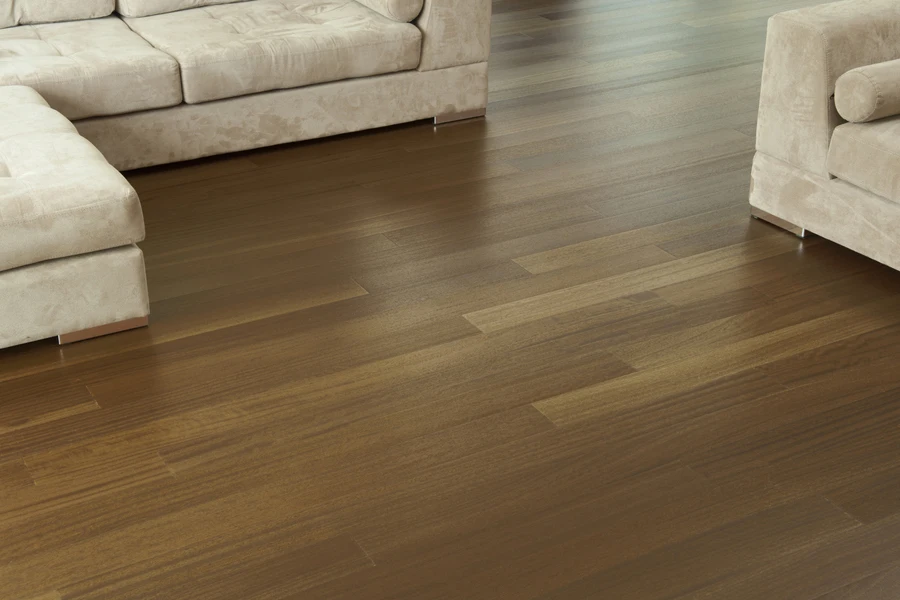
An engineered wood floor with a high-quality, stable core and a layer of hardwood veneer creates unique looks in homes and commercial spaces. Besides being a good choice, this flooring has many other benefits.
As such, looking at all the engineered hardwood flooring products on Alibaba.com is a good idea. There, you will find so many color options, textures, sizes, and installation methods that the biggest problem will be choosing the best flooring options.
